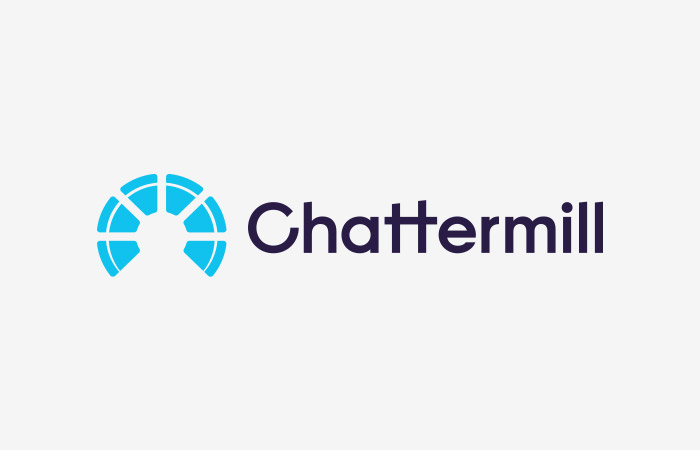Let's fast forward a few days, Black Friday is over and the results are good.
Initial reports suggest this may be the best Black Friday ever.
Compelling discounts and deals have been impactful.
Lapsed customers who haven’t shopped recently have returned in large numbers.
Moreover a significant percentage of customers are completely new to the organisation.
Harnessing these customers would, in theory, go a long way towards hitting 2024 growth targets.
But there’s a catch, not all of these customers will be worth the effort.
Earlier this year ASOS reported that a small number of customers accounted for a ‘disproportionately negative impact on profitability’.
More specifically, they had identified that just 6% of their active customers were costing them an eye watering £100m.

As Orwell might have said, all customers are equal, but some customers are more equal than others.
So what are the lessons that we can take and the pitfalls to avoid?
You get to choose which customers you will lose, not whether you will lose customers
While I was working with an online subscription company recently, they (rather matter of factly) told me about the decision they took to lose a significant number of customers. I was impressed.
The recognition that some customers are less valuable than others is not unusual, the confidence to proactively act on this is much rarer.
As the organisations pioneering Experience Led Growth have shown, the key to delivering rapid growth is to understand what’s important to customers and to ruthlessly execute on that understanding.
However there is a subtlety here, important to which customers?
In the case of ASOS the narrative was pretty clear “we have a group of customers that actually cost us £6 per order”.
In such a situation it should be reasonably straightforward to convince people that focusing on these customers is not beneficial.
What I loved about the subscription company I was working with however, is that it was much less obvious.
There wasn’t a £100m dent in the balance sheet.
They had simply recognised that the demands of this customer group and what was required to keep them happy were different from other more profitable customers.
They understood that they couldn’t be all things to all people.
And that meant they had to make a choice.
The bottom line is it simply isn’t possible to keep everyone happy.
There will always come a point where the interests of one potential customer group are at odds with another.
This can often be quite subtle and nuanced, but we can use a simple example to illustrate the point here.
Let’s take a luxury clothing brand.
For some customer segments being able to buy the luxury brand’s clothing at a discount is incredibly appealing.
However, the brand’s core customers are paying high prices specifically for the prestige and exclusivity associated with it.
So while discounting is a positive element of the experience for the first customer group, for the second group discounting lowers the exclusivity and attractiveness of the brand.
The desired experiences of the two customer types clash with each other.
This means the discounting strategy the organisation chooses to take will inevitably favour their success with one group or another.
As we’ve seen with Ryanair, organisations who successfully focus on the right customers that align with their strategy and differentiators will always overcome their competition.
However, there is a broader point.
It isn’t just that focusing on the right customers is the key to success.
It is that there is no opt out here, not making a choice on who to focus on is still in effect making a choice.
It is just that one choice is conscious and intentional and the other is not.
Organisations can either proactively decide which customers to focus on (and which other customers are therefore likely to fall by the wayside) or they can effectively leave it to chance.
To provide a sobering point of reference - a global retail client recently identified that just 10% of their customers accounted for 50% of their revenue.
Without clarity and the conscious decision of where to focus, an organisation could easily expend equal amounts of effort improving the experience of the 6% of customers that lose them £100m and the 10% that deliver 50% of their revenue!
And that’s assuming the 6% aren’t shouting the loudest - if you’re employing a finder-fixer mindset you could even be focusing the majority of your effort on the loss makers!
Knowing which customers to focus on and then targeting efforts to improve the experience for them is key.
So a decision needs to be taken, but how do you make the right one?
It’s a good question, how can you be sure that you are focusing on the right customers?
There are 4 stages of the process to achieve this.
1) Get really clear on who you are creating the experience for
The first is to be really clear on your target customers.
Almost all organisations know this at a topline level, ASOS for example are targeting fashion conscious 20-somethings around the world.
However real clarity means going much deeper to understand both the value and the potential value of different customer segments.
This is achieved by combining behavioural data (what people do) with what they think and what they feel (why they do it).
Of course, not all unprofitable or low value customers should be deprioritised.
This process also includes understanding why unprofitable customers are unprofitable and whether they can be converted to profitable ones.
Taking returns behaviour as an example, not all customers who return items are destined to be forever unprofitable.
Understanding exactly why they returned the items is fundamental.
Likewise you may think that customers you attract through coupons or discounts don’t stick around for long.
You could check their Lifetime Value and this may be born out, but you need to go deeper than that and understand why they didn't stick around for longer.
It may be that they’re just price sensitive customers who love deals and then don’t repeat purchase (and a proportion may look like that) but it may also be that the experience via this particular acquisition route had an impact on their Lifetime Value.
Maybe the discount codes didn’t work and they had to contact customer support, or a bug meant the discount code reset their basket and they had to re-enter their information repeatedly to successfully check out.
Sunk Cost Fallacy suggests at least some customers will doggedly persist to complete the purchase in hand (“well I’ve come this far so I’ll follow through and complete it”) but they won’t be left with a positive impression or purchase from you a second time.
2) Get really clear on what they think and value
Once your target customers are identified, make sure you know them well. Be really clear on what they think and feel. Where do the perceptions of your target customers and other customers diverge?
They may value completely different things or they may both believe the same things are important but in different ways.
As an example we can take the range of products an organisation provides to their customers, by having clarity on what their target customers value they can see that:
Some customer segments think the range is already confusing and believe there is too much choice.
Their target customers really value a broader range and think there isn’t enough choice.
The amount of choice is in fact important to both customer groups, they both want the right amount of choice for them, but what that looks like is different for each.
This level of understanding allows the organisation to identify how to grow and retain their most profitable target customers.
3.) Execute with confidence
With this intelligence in place you can confidently invest in the right areas to retain and grow these customers.
This is not the same as giving customers exactly what they want, rather it is taking decisions with the full knowledge of what’s important to them (and what is not).
This clarity allows initiatives and investment across the organisation to be strategically coordinated and prioritised.
Taking the ‘amount of choice’ example from stage 2 - expanding the range that the organisation provides could require significant investment, they may need to increase the number of suppliers, improve logistics and amend the product design.
The organisation is able to confidently make these investments because there is no confusion as to which customers they are focused on.
Certainty around the value of different customer segments also allows targeted operational savings and efficiencies to be made without damaging the experience for target customers.
ASOS for example introduced charges for returns made after 2 weeks, prompting quicker returns and increasing their ability to resell the returned product at full price.
It may also involve specific efforts to change the behaviour of customers identified as ‘not yet profitable’.
Again ASOS targeted action to amend the behaviour of their least profitable customers including restricting buy now, pay later solutions.
4.) Keep a firm finger on the pulse
Understanding customers in this way is not a one off exercise but rather a continuous process.
It’s unlikely you’ll get every decision right, first time, every time.
Absolute clarity on what your target customers think is your leading indicator going forwards.
The perceptions of these customers drive their behaviour and this behaviour will either be beneficial or detrimental to your bottom line (and the success of your strategy).
So it’s crucial to keep track of what’s going on - how are the actions that you are taking impacting customers?
It’s likely that some course correction will be needed ongoing.
ASOS provide an example of this in their most recent report where they call out that “some of our country-level profitability initiatives will have inadvertently caused us to churn higher quality, or ‘not-yet-profitable’ customers, and our approach in FY24 and beyond must be to better connect with our most fashion-engaged customers, thus improving retention”.
Losing to win
As we have seen, taking decisions that may lead to the loss of certain customer segments is not only advantageous but it is also inevitable.
An organisation cannot avoid optimising their experience for someone - the only question is whether they are doing it intentionally or unintentionally.
Being willing to lose customers doesn’t mean sending them an email saying ‘you’re fired’.
It’s just that focusing on your ideal customers in any material way will likely lead to a lack of focus on what other customers want.
Lack of clarity and confidence often means organisations end up making small changes around the edge, changes that will never fundamentally alter their growth trajectory.
It can sometimes take a £100m wake up call to align an organisation around broad coordinated changes focused on the customers they want.
But it doesn’t have to.
The opportunity is there for any organisation to proactively take this approach.
The very fact that many companies don’t currently do this means that it is a real competitive advantage for those that do.
Whilst by following the right process and with the right intelligence risk is removed. It’s certainly a lot less risky to intentionally focus on customers you know to be valuable than to be flying blind.
Competitive advantage, less risk. Those 4 words are quite compelling.
For organisations on this journey this level of customer intelligence informs all of the decisions that they take including how, what and when they discount. It also includes how they capitalise on the influx of new customers that Black Friday provides.
Worth considering…those 2024 growth and profit targets aren’t going anywhere after all.
But let’s finish by saying hats off to ASOS, they’ve almost certainly got a long road ahead but I’m guessing they’ve also got some good shoes.






.jpg)
